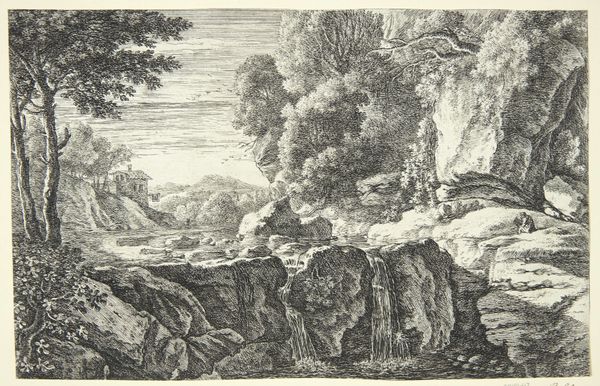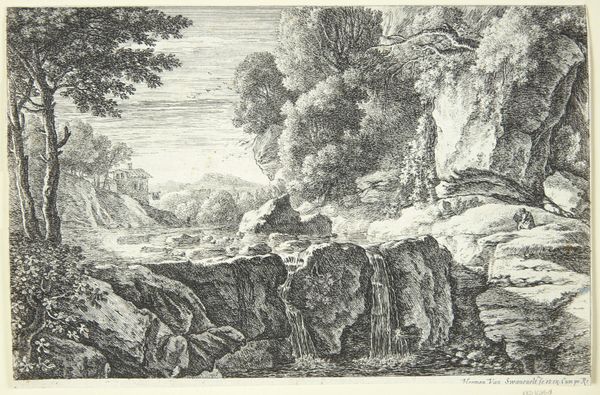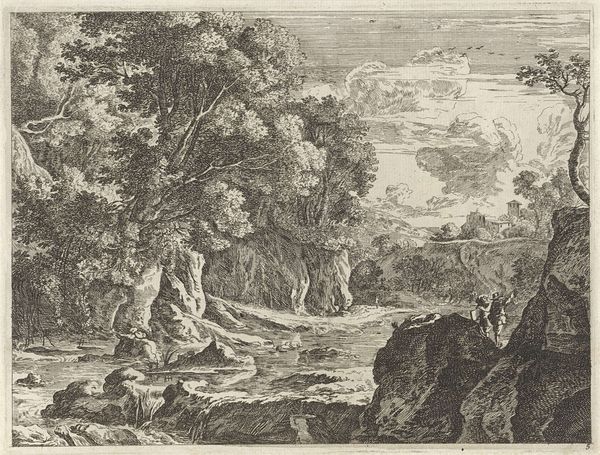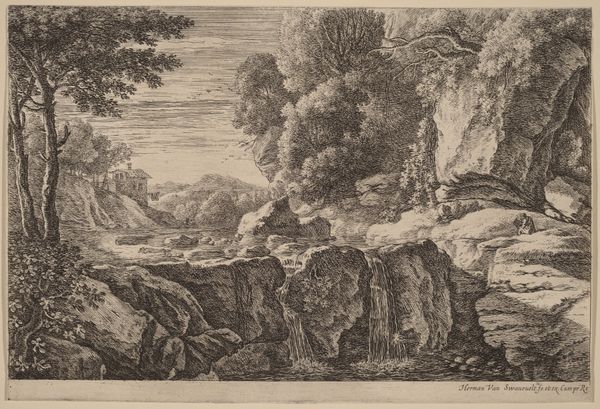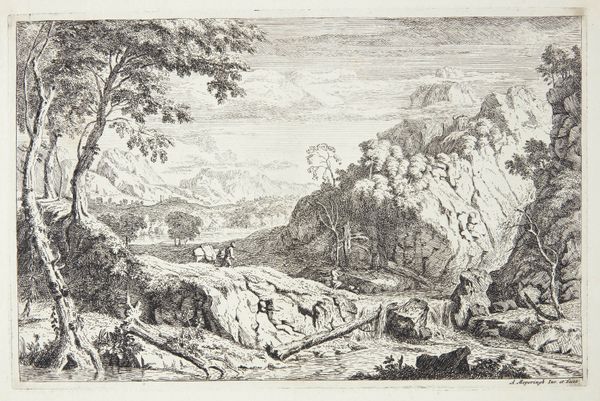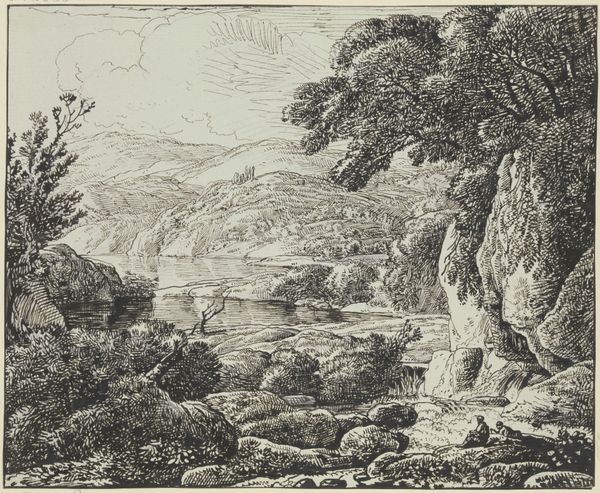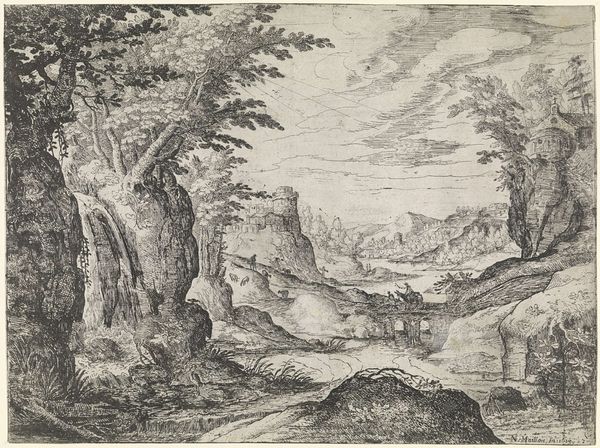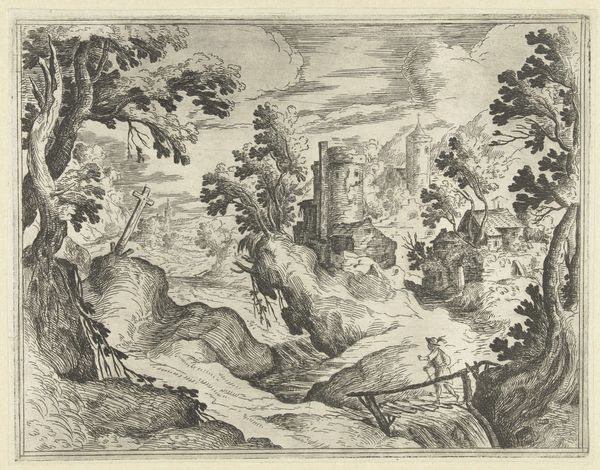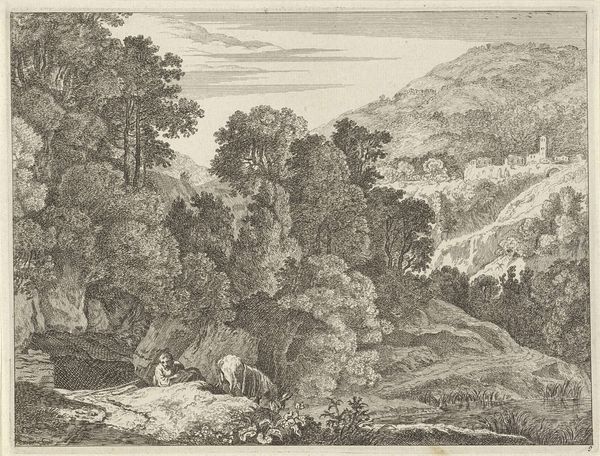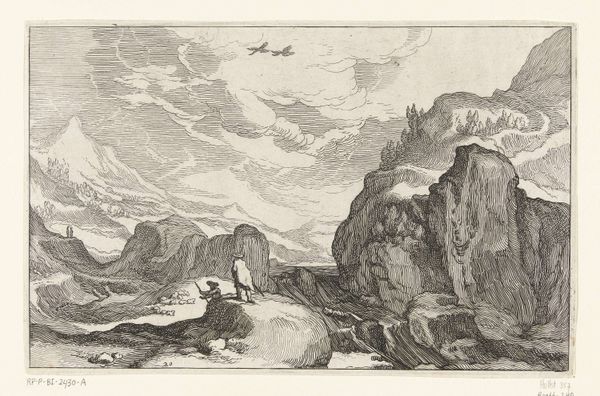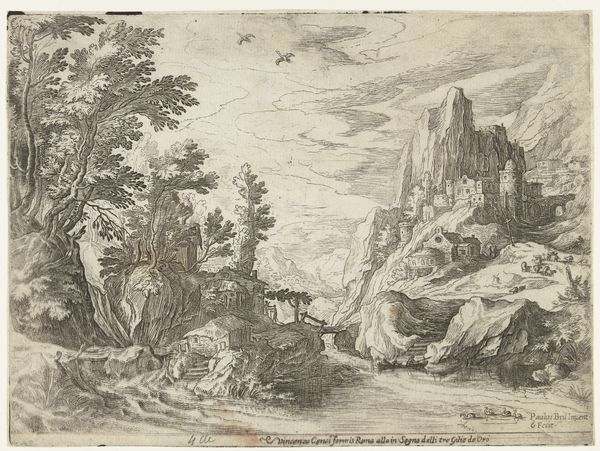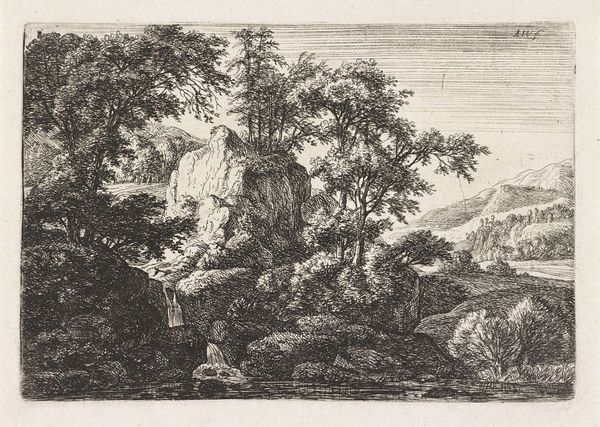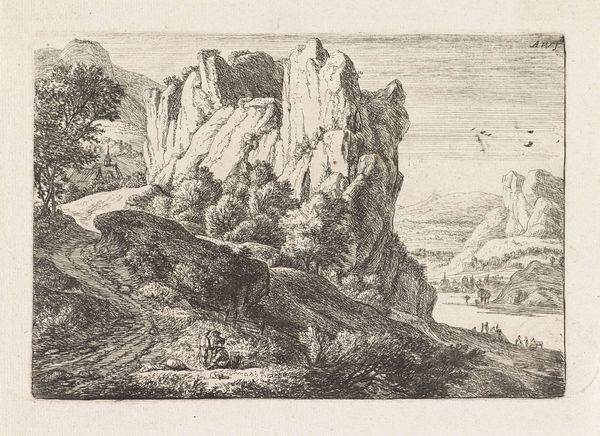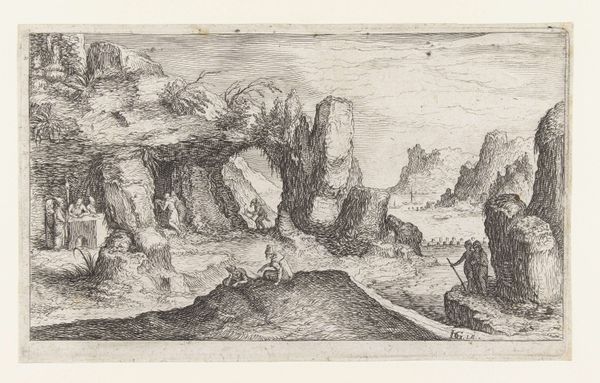
drawing, etching, paper, ink, engraving
#
drawing
#
baroque
#
pen drawing
#
etching
#
old engraving style
#
landscape
#
paper
#
form
#
ink
#
geometric
#
line
#
pen work
#
engraving
#
realism
Dimensions: height 153 mm, width 204 mm
Copyright: Rijks Museum: Open Domain
Editor: This is "Landschap met kleine waterval," or "Landscape with Small Waterfall," an etching dating sometime between 1643 and 1679, currently held at the Rijksmuseum. The style feels like a return to realism after some of the more decorative baroque landscapes. The figure on the rocks to the left gives a peaceful feel. What do you see in this piece? Curator: What strikes me is the inherent tension within the idyllic scene. On one hand, you have this romanticized view of nature, a small waterfall nestled amongst trees and rocks. Yet, consider the period. This was a time of significant social stratification, of burgeoning colonialism, and early industrial change. Where does the artist fit into the historical narrative? Editor: So you're suggesting that we shouldn't take the image at face value as simply a scene? Curator: Precisely. What labour made this image possible? Who could afford art in 17th-century Europe? I wonder, does the solitary figure in the landscape have access to such beautiful scenes, or does his presence reveal a separation between those who enjoyed art and the reality for the average citizen? Consider gender. Are depictions of landscapes automatically coded in a masculine vision? Is nature something conquered in this worldview? Editor: I never thought of landscapes this way, but those are really interesting points. What would looking at gender do for a piece that ostensibly ignores women? Curator: Perhaps what is missing reveals more than what is included? Landscape paintings from this era participated in forming national and cultural identities in relation to the land. Art can reinforce existing power structures or critique them. By considering how class, gender, and race operate in art history, we see these landscapes not just as neutral observations, but as participants in political and social dialogues. Editor: Thank you! This has shifted my perspective and how I think about landscapes in general. It adds a lot to the viewing experience to consider how art might challenge or support society. Curator: Agreed. Asking "who benefits" when experiencing artwork helps to unpack narratives around it.
Comments
No comments
Be the first to comment and join the conversation on the ultimate creative platform.
